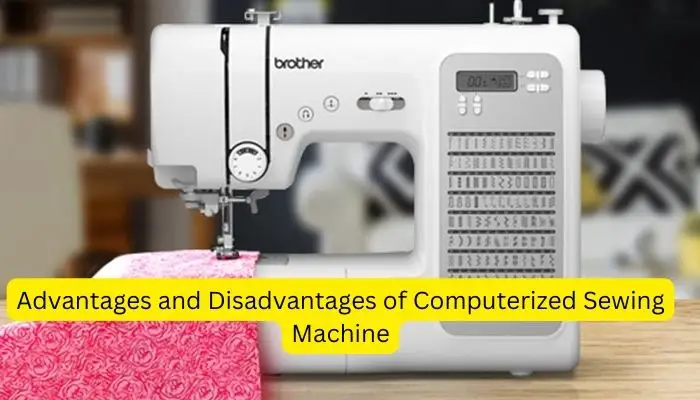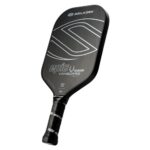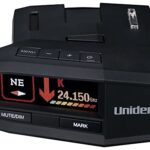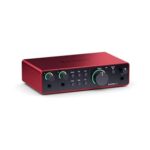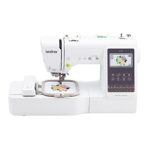Disclaimer: We may earn affiliate commission from qualifying purchases at no extra cost to you.
Introduction
Sewing machines are an essential tool for both professional sewists and hobbyists. They simplify the tedious task of sewing, making it faster and less labor-intensive. But like any other machine, sewing machines have their limitations and drawbacks. In this section, we will discuss the disadvantages of sewing machines, their impact on your sewing projects, and why it’s crucial to understand them.
Brief Overview of the Topic
Sewing machines are designed to make sewing easier, but they are not without their disadvantages. From basic mechanical issues to complex technical problems, these drawbacks can affect the quality of your sewing projects. Understanding these limitations will enable you to make informed decisions when purchasing sewing equipment.
Importance of Understanding the Disadvantages of Sewing Machines
Sewing machines can be complicated, and their limitations can have an impact on your sewing projects. By understanding these disadvantages, you can better assess which machine is right for you and determine which project suits your machine’s capabilities. Being aware of these limitations will also help you troubleshoot problems with your sewing machine and save time and money.
Mechanical Issues
Sewing machines are complex machines made up of many parts that can wear out over time. Some of the drawbacks of sewing machines include mechanical issues that can affect the quality of your stitching. These problems can include poor tension, inability to handle thick fabrics, thread breakage, and skipped stitches.
- Poor tension: Uneven or inconsistent stitches can be caused by incorrect thread tension. This can cause the fabric to pucker, which can ruin the look of the finished product.
- Inability to handle thick fabrics: Some sewing machines struggle to handle thicker fabrics such as denim or leather. This can cause the machine to jam or break, leading to costly repairs.
- Thread breakage: Thread breakage is a common issue when sewing. It can be caused by a dull needle, incorrect thread tension, or using the wrong type of needle for the fabric.
- Skipped stitches: Skipped stitches occur when the machine fails to catch the fabric correctly. This can be due to the needle being too small or wrong sized, the fabric being too thick, or the machine running too fast.
Technical Limitations
Sewing machines can also have technical limitations that can impact the quality of your sewing projects. These limitations can include:
- Inability to perform certain stitches: Not all sewing machines are created equal, and some machines may not have the ability to perform all types of stitches or designs.
- Inability to embroider: While some sewing machines have embroidery capabilities, not all machines have this feature. This can limit your ability to embellish your sewing projects.
- Limited speed: The maximum speed of a sewing machine is a key consideration when choosing a machine. A slower machine may be able to achieve better quality stitches, while a faster machine can help to complete projects more efficiently.
In conclusion, sewing machines have their limitations and drawbacks. Understanding these limitations will help you to make informed decisions when purchasing sewing equipment, choosing projects that fit your machine’s capabilities, and troubleshooting problems with your machine.
The Cost Involved in Sewing Machine
Sewing machines are essential tools that have made sewing easier and more efficient. However, like any other machine, sewing machines have their disadvantages. One of the most significant disadvantages is the cost involved. In this blog post, we will discuss the various costs associated with sewing machines, from the initial purchase costs to the upkeep and maintenance costs.
Discussion about the Initial Cost of Purchasing a Sewing Machine
The initial cost of purchasing a sewing machine varies depending on the machine’s brand, features, and functionality. Here are some factors that can affect the price of purchasing a sewing machine:
- The sewing machine’s brand and model
- The sewing machine’s features
- The sewing machine’s functionality
- The seller’s location
Additional Costs Incurred When Buying a Sewing Machine
Apart from the initial cost of purchasing a sewing machine, there are other costs that you need to consider. They include:
- Maintenance costs: Sewing machines require regular maintenance to function correctly. You may need to oil the machines, replace worn-out parts, and clean the machines regularly.
- Repairs: If your sewing machine breaks down, you may need to take it for repairs. The costs of repairs vary depending on the machine’s complexity and the extent of the damage.
- Supplies: Sewing machines require several supplies to function correctly. These include needles, bobbins, threads, and fabric. Such supplies come at varying costs, and you need to consider them when purchasing a sewing machine.
Comparison of Buying a New Sewing Machine and Repairing an Old One
If your sewing machine breaks down, you may wonder whether to buy a new machine or repair the old one. Here are some factors that you need to consider:
- Cost: If the repairs will cost more than half the cost of purchasing a new machine, then it’s advisable to buy a new machine.
- Age of the machine: If the machine is too old, finding replacement parts may be difficult, making it hard and expensive to repair.
- Condition of the machine: If the machine has a history of frequent breakdowns or if it’s too worn out, buying a new machine may be the best option.
In conclusion, it’s essential to consider the costs involved in purchasing and maintaining a sewing machine. While sewing machines can be expensive, they are crucial investments that can help save time and money in the long run.
Limitations in Functionality
Sewing machines have revolutionized the way we sew. They offer incredible speed, precision, and efficiency, making it easier to create stunning garments. However, like any machine, sewing machines have drawbacks, and one of the significant limitations is functionality. In this section, we will discuss the different types of sewing machines, comparing computerized and manual sewing machines, and detailing the limitations in functionality.
Explanation of the Different Types of Sewing Machines
Sewing machines are classified into four types: mechanical, electronic, computerized, and overlocking. Each type has its unique features and capabilities.
-
Mechanical Sewing Machines: These are the simplest and most affordable type of sewing machines. They use a rotary hook mechanism to form a stitch and are manually operated.
-
Electronic Sewing Machines: These machines use a built-in motor, and the motor’s speed determines the stitching speed. They come with a range of features such as automatic needle threading, thread cutting, and stitch length adjustment.
-
Computerized Sewing Machines: These are the most advanced type of sewing machines. They come with features such as touch screens, USB port, and automatic thread tension. They can also perform elaborate embroidery designs.
-
Overlocking Sewing Machines: These machines are used for finishing seams and edges. They use multiple threads to create a strong and durable seam.
Comparison of Computerized and Manual Sewing Machines
Computerized and manual sewing machines have considerable differences. Here are some key points for comparison:
- Computerized sewing machines are much smoother and quieter.
- They are much more precise and can create intricate designs with ease.
- Manual sewing machines are more durable and simpler to maintain.
- They are more affordable and can handle thicker fabrics with ease.
- Computerized sewing machines require more technical skills and expertise to operate.
Discussion on the Limitations of the Features and Functions of a Sewing Machine
Despite their many benefits, sewing machines also have notable limitations in functionality. These include:
- Less versatility: Sewing machines are specifically designed to create stitches on fabrics. They cannot work on materials like leather, vinyl, or thick fabrics like denim.
- Limited stitch variations: While sewing machines can offer a range of stitching patterns, they have limitations in stitch variation, and some patterns can be challenging to achieve.
- Cost: Although manual versions are affordable, computerized sewing machines are a considerable purchase that might not be feasible for everyone.
- Maintenance: The complexity of advanced sewing machines can make them challenging to maintain, as repairs are costly and complicated.
In conclusion, sewing machines have revolutionized the textile industry, but they come with their limitations. Being mindful of the different types and limitations of features and functions can guide you to choose the right machine to fulfil your sewing needs.
Sewing Machines are Not Portable
Sewing Machines are Not Portable
Sewing machines are undoubtedly an essential tool for beginners or professional sewists. However, one of the disadvantages of using a sewing machine is its portability. Here are some of the reasons:
The weight and bulkiness of sewing machines
Sewing machines nowadays come in various styles, designs, and sizes. Although there are compact versions, most of them are still bulky and heavyweight. This makes it difficult to transfer from one place to another, especially if you live in a house with multiple levels, or if you share a sewing space with others.
The difficulties of moving sewing machines from one place to another
Aside from its weight, another issue of sewing machines is its complexity. Breaking down a sewing machine for transportation can be tricky, requiring advanced technical knowledge, specifically for older models. Disassembling the machine can also lead to misplacing the various small parts that need to be put back together correctly.
Transportation of sewing machines to sewing classes
Transporting a sewing machine to a sewing class could be a daunting task, especially for those who live far from classes or if they don’t have a car. Even if you own a car, accommodating a bulky and heavyweight machine can be challenging, especially if it takes up a lot of room in the back seat or trunk.
In conclusion, the inability to move or transport your sewing machine with ease is undoubtedly a formidable disadvantage. Manufacturers continue to improve the mobility of sewing machines, but for now, sewists have to put up with the bulkiness and weight, making it challenging to move their machines from one place to another.
The Learning Curve to Use a Sewing Machine
Sewing machines have been a valuable tool for creating stunning garments, home décor, and accessories. However, the convenience of using a sewing machine is overshadowed by some of its disadvantages. One such challenge is the learning curve to use a sewing machine.
Time and effort involved in learning how to operate a sewing machine
Operating a sewing machine requires time and patience. Here are some of the key points to consider:
- You should learn the basics of stitches, tension, and threading. It can take you anywhere from several hours to a couple of weeks to master this skill.
- If you aren’t accustomed to using mechanical devices, learning a new skill on a sewing machine can be overwhelming.
- Reading the manual can be a daunting task, but it’s essential to take the time to understand how your machine works to avoid breaking it.
The high complexity of some sewing machines, which may take longer to learn
Some sewing machines come packed with various features and functions, making them complicated to use. Here are some of the key points to consider:
- High-end machines often come with advanced features like automatic needle threading, embroidery, stitching patterns, and computerized functions. These features might take longer to learn if you’re a beginner.
- Some models have complex tension settings that require meticulous adjustments before starting the project.
- The settings, knobs, and buttons can take some time to get acquainted with, but with continued use, you will become more familiar with them.
Beginner-friendly sewing machines
If you’re just starting out in sewing, there are machines designed to cater to your needs. Here are some of the key points to consider:
- A simple mechanical sewing machine is perfect for beginners. They have fewer features and are more manageable to operate, making the learning process less intimidating.
- Affordable models are available that come with basic functions, including straight and zigzag stitches, reverse stitch, buttonhole foot, and presser foot.
- High-quality machines with fewer bells and whistles are less likely to malfunction and need less maintenance.
In conclusion, operating a sewing machine comes with a learning curve that requires time and effort investment. With dedication and practice, you can overcome the challenges and enjoy the benefits of sewing beautiful pieces that you’ll cherish for years to come.
Maintenance and Repairs
Sewing machines are an incredible invention and a must-have for anyone who loves sewing. They are versatile, affordable and make projects so much faster and easier. However, like any other mechanical device, they have their drawbacks. As an experienced sewist, I know that maintenance and repairs are among the most significant disadvantages of sewing machines. Let’s explore maintenance and repairs, including the costs involved, the simplicity of maintenance, and the duration of repairs in this blog post.
The costs of maintaining a sewing machine
One of the primary disadvantages of sewing machines is the cost of maintenance. While they are durable and can last for years, they need regular maintenance to function correctly. The cost of maintenance varies depending on the type of machine, the frequency of use, and who does the maintenance. Here are some of the costs involved:
- Servicing: This can cost between $50 and $150, depending on the location and the service center.
- Replacement Parts: Sewing machines have many parts that can wear out and need replacement, and the cost of the parts will depend on the type and model of machine.
- Accessories: Accessories such as bobbins, needles, and presser feet need regular replacement, adding to the overall costs of maintaining a sewing machine.
Comparison of the simplicity of maintenance for different types of sewing machines
Maintenance can vary depending on the type of sewing machine you have. Some machines are easier to maintain than others. Here are some comparisons between different types of sewing machines:
- Mechanical machines are known for their simplicity, and maintaining them is relatively easy. They usually need oiling, cleaning, and occasional adjustments, which can be done at home.
- Computerized machines are more complex and require regular updates and calibration. These activities may require a professional servicing technician and can be costly.
- Embroidery machines are the most complex and require a lot of maintenance, which can also be expensive. They need regular oiling, cleaning, calibration, and replacement of parts, and accessories.
The time taken to repair sewing machines and the period without a sewing machine when repairs are being made
Sewing machines can break down at any time, and depending on the severity of the problem, repairs can take several days to weeks. This means that you may have to endure long periods of not having a sewing machine, and this can be frustrating, particularly for those who sew for a living. Here are some of the factors that determine how long repairs can take:
- The nature of the problem: If the problem is minor, repairs can be done relatively quickly. If it’s a significant issue such as broken parts, repairs can take much time.
- The availability of parts: If the parts needed for repairs are not readily available, it can take longer to restore the machine.
- The technician’s workload: If the technician has many machines to repair, it may take longer to repair yours.
In conclusion, it’s essential to recognize the potential disadvantages of sewing machines before purchasing one. Maintenance and repairs are a significant part of owning a sewing machine, and the costs can add up quickly. However, regular maintenance and timely repairs will ensure that your machine lasts longer and performs better.
Noise and Vibration
Sewing machines can be a great addition to your creative arsenal, but like any tool, they come with their disadvantages. One of the biggest complaints users have is the noise and vibration that these machines produce. In this article, we will take a closer look at these two issues and how they can affect your sewing experience.
The levels of noise that sewing machines produce
When sewing machines are in operation, they can produce various levels of noise, depending on the type of machine and the materials being used. Here are some key points to consider:
- Some sewing machines operate quietly, while others can be quite loud, making it difficult to hear anything else in the room.
- The amount of noise a sewing machine produces can vary depending on the stitching speed. The faster the stitching, the louder the noise.
- Noise levels can also increase when working with heavier fabrics, such as denim or leather.
The vibrations from sewing machines that may cause discomfort to some individuals
Sewing machines also produce vibrations that may cause discomfort to some users. These vibrations can affect the user’s hands, arms, and even the entire body. Here are some important things to keep in mind:
- The amount of vibration produced by a sewing machine can vary depending on the type of machine and the sewing speed.
- Continuous use of a sewing machine can lead to hand and arm fatigue, which can be uncomfortable and even painful.
- Placing the sewing machine on a sturdy surface, such as a table, can help reduce vibrations and make the machine more stable.
In conclusion, while sewing machines are incredibly convenient and useful, they do produce noise and vibrations that can be problematic for some users. However, by understanding the causes of these issues and taking steps to address them, you can improve your sewing experience and minimize the impact of these disadvantages.
The Need for Accessories and Supplies
Sewing machines are a valuable tool for crafting and tailoring, providing faster and more efficient ways of sewing compared to traditional hand-sewing techniques. However, even with their advantages, sewing machines also have their limitations and drawbacks. In this blog post, we’ll discuss the disadvantages of sewing machines, particularly the need for accessories and supplies and the additional costs involved.
Discussion about the essential accessories and supplies required for sewing machines
Sewing machines require a variety of accessories and supplies to function properly. Some of the essential accessories needed for sewing machines are:
- Bobbins: These small, circular components hold the thread while stitching and should match your sewing machine’s make and model.
- Needles: Sewing machine needles come in different thicknesses and sizes, depending on the fabric you’re sewing.
- Foot pedal and power cord: These components are needed to power up your machine and control its speed.
- Presser feet: Different types of presser feet help guide fabric, control seam allowance, and stitch in a straight line.
Without these accessories, your sewing machine would not be able to stitch properly. While some machines come with basic accessories, investing in additional tools can help expand your sewing options.
The Additional Costs in Acquiring the Necessary Accessories and Supplies
The need for additional accessories and supplies can impact your budget. Besides the essential components, there are several optional accessories that can improve your sewing experience, including:
- Thread spools in various colors: To match different fabrics and achieve varied stitching effects.
- Fabric scissors: High-quality fabric scissors are an essential tool for cutting fabrics without causing frays or damaging the material.
- Marking tools: Chalk, pencils, and markers help you mark patterns, darts, and hems on fabric.
Investing in high-quality accessories can make sewing more comfortable and efficient, but you must be prepared to spend extra money.
In conclusion, while sewing machines offer great advantages, they also have their downsides. The need for multiple accessories and supplies can impact your budget, and these additional costs should be factored in before investing in your sewing machine. However, with the right tools and expertise, sewing machines can help you create beautiful and unique items that are both practical and beautiful.
The Need for Space
Sewing machines have become an essential tool for avid sewers, hobbyists, and professionals alike. However, like any other equipment, sewing machines have their fair share of disadvantages. One major concern for sewing machine users is the need for space, which can be an issue, especially for those living in small apartments or houses.
The amount of space needed to accommodate a sewing machine
Sewing machines come in different sizes and specifications, meaning the amount of space needed to accommodate them varies. However, regardless of the sewing machine’s size, there are general requirements for the space needed to operate and store it.
- A proper work surface is needed to set up the sewing machine and accommodate fabric during the sewing process.
- The machine needs enough space for comfortable foot control and movement while using it.
- The operator should have sufficient space to position the fabric in and out of the machine.
The challenge of finding space to store a sewing machine when not in use
When the sewing machine is not in use, storage can pose a significant challenge. The device is bulky and not easily tucked away like other everyday items.
- Sewing machines require dedicated storage space, which can be quite a hustle in cramped living quarters.
- Finding a storage unit that can accommodate the machine’s size while still protecting it from dust and other elements can also be tricky.
- Storing the machine in a location that is easy to access and use whenever needed can also be a challenge.
In conclusion, the space required for a sewing machine is a significant disadvantage, especially for people living in small houses or apartments. However, with proper planning, users can create enough working and storage space for their machines, ensuring they can continue to enjoy the benefits of sewing.
Environmental Impact
Sewing machines have been essential tools for creating clothes, accessories, and even home decor for decades. However, like any other machine, there are also disadvantages that come with their use. Among these drawbacks is their negative impact on the environment. In this section, we will discuss the environmental impact of sewing machines, particularly the effects of plastic sewing machines, and ways to mitigate them.
Discussion on the Environmental Impact of Using a Sewing Machine
Sewing machines, like any other electrical devices, contribute to the planet’s carbon footprint. Below are some of the environmental impacts of using a sewing machine:
- Sewing machines consume electricity, which contributes to greenhouse gas emissions.
- The manufacturing of sewing machines produces a significant amount of waste and carbon emissions.
- Some components of sewing machines, particularly those made of plastic, are not biodegradable and can take several centuries to decompose.
The Effects of Plastic Sewing Machines on the Environment and How to Mitigate Them
Plastic sewing machines are common, affordable, and easy to maintain, but they pose a threat to the environment. Here’s how:
- Plastic sewing machines are not biodegradable, which means they can sit in landfills for hundreds of years.
- Some plastic sewing machines contain hazardous chemicals that can leak into the soil and groundwater.
- The production of plastic sewing machines consumes a lot of energy and emits carbon dioxide, contributing to global warming.
To mitigate the environmental impact of plastic sewing machines, here are some recommendations:
- Invest in a high-quality metal sewing machine that will last for years and can be repaired and maintained easily.
- Consider purchasing second-hand or vintage sewing machines.
- If you prefer using plastic sewing machines, dispose of them properly by recycling or donating them.
In conclusion, sewing machines play a significant role in creating fashionable items, but their environmental drawbacks cannot be ignored. It is everyone’s responsibility to ensure that our sewing practices are sustainable and eco-friendly. As consumers, we can make a positive impact by choosing environmentally-friendly products and disposing of them responsibly.
Conclusion
Are you someone who enjoys sewing? Or maybe you’re looking to buy a sewing machine? While sewing machines have many advantages, they also have some drawbacks. In this post, we’ll explore the disadvantages of sewing machines, and whether these drawbacks are significant enough to outweigh their usefulness.
Recap of the disadvantages of sewing machines
- Noise: Sewing machines can be noisy, which can be a nuisance for you, your family, and your neighbors.
- Complexity: Sewing machines can be complicated to use, with a lot of dials and buttons to navigate.
- Cost: Sewing machines can be expensive, especially if you want one with advanced features.
- Maintenance: Sewing machines require regular maintenance, such as oiling and cleaning, which can be time-consuming and costly.
- Specialized skill: Sewing machines require a level of specialized skill to operate. Without proper training, it can be challenging to use the machine correctly.
Final thoughts on the usefulness of sewing machines despite their disadvantages
Despite these disadvantages, sewing machines have undeniable benefits. They allow you to create beautiful and functional garments and quilts, save time, and potentially save money in the long run by making your own clothes instead of buying them.
In conclusion, the disadvantages of sewing machines should be weighed against their advantages. With patience, practice, and proper maintenance, the benefits of owning a sewing machine can far outweigh its drawbacks. Happy stitching!
Frequently Asked Questions on Title: Understanding the Disadvantages of Sewing Machines
1. What are the main disadvantages of using a sewing machine?
Sewing machines can be expensive and require maintenance. They also require electricity and may not be suitable for certain fabrics.
2. Is it difficult to learn how to use a sewing machine?
Learning how to use a sewing machine can take time and practice. It may also require watching tutorials or taking classes.
3. What are the risks associated with using a sewing machine?
The risks associated with using a sewing machine include injuring fingers or other body parts, damaging fabric, and electrical hazards.
4. Do sewing machines always produce perfect stitches?
Sewing machines can produce imperfect stitches, especially if the tension or needle is not adjusted correctly. This can result in uneven or loose stitches.

Meet Jeremy E. Hendley, a seasoned product review expert whose passion for technology, innovation, and consumer empowerment has propelled him to the forefront of the industry. With a keen eye for detail and an insatiable curiosity about the latest gadgets and innovations, Jeremy has become a trusted voice in the realm of product reviews.

